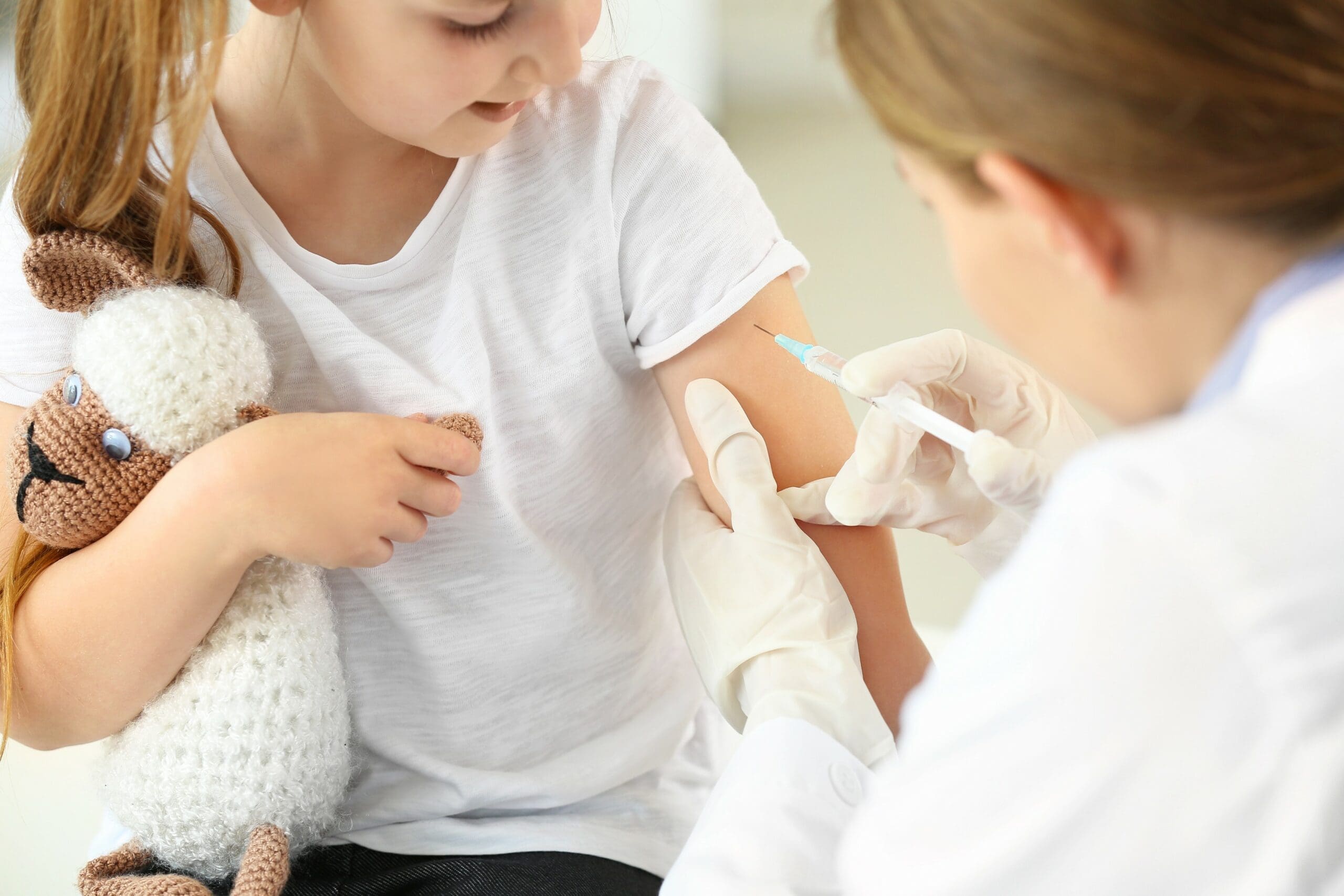Video transcript
Hi there, I’m Dr Golly. Today we’re going to discuss the single most effective way of preventing serious illness in children and adults – vaccinations. I’m going to explain how they work, talk about the common side-effects and address some worries regarding vaccines.
Some parents are very concerned about vaccine safety and choose not to vaccinate their children. The media also talks a lot about anti-vax groups and propaganda. One thing that we, as paediatricians, know – is that any parent who is vaccine-hesitant, just wants what is best for their child. So without any judgement, let’s learn more about vaccines and dispel some myths that might be out there. I’ll jump to the whiteboard and start with how vaccines work.
When a bug enters the body, we fight against this bug by producing antibodies. Antibodies act by labelling this bug as foreign, which triggers our immune system to attack and destroy it. It’s estimated that we can make millions of antibodies a day, and although most antibodies will break down once the job is accomplished, some will hang around and remember that nasty bug, so if it turned up again, you can destroy that invader very fast, before it has any chance to cause any damage.
We call these antibodies ‘memory cells’ and this is what helps make our immune system extremely efficient. But, the problem is – sometimes it can take a few days to ramp up this antibody production, which means we are vulnerable to that bug until we produce antibodies. For nasty bugs like measles or whooping cough, a few days can literally mean the difference between life and death.
And that’s where vaccines come in. Vaccination – or immunisation – is when we take part of these nasty bugs, not enough to cause the actual disease, but enough for our body to recognise the bug, produce antibodies and make memory cells that can last a lifetime.
This means that if you ever come into contact with the bug, for example – the measles virus – your body recognises that bug and destroys it efficiently. Most of the time without you so much as having a cough.
Vaccines also work in another way. If you can’t be vaccinated because you’re too young, or unwell – but you are surrounded by people who are fully vaccinated, this means you’re unlikely to come into contact with the bug in the first place. So you are protected, even though you haven’t been vaccinated yourself.
We call this herd immunity – because you’re protected by the herd around you, but in order to benefit from this, almost all the herd needs to be vaccinated. This is why we have community-wide vaccination programs.
An example of such a program is the smallpox vaccine. Smallpox used to kill millions of people every year and as recently as the 1970s, smallpox was a major public health problem. The widespread use of smallpox vaccines has meant that the disease is now completely eradicated, so effectively that we don’t even need to immunise against it anymore!
Let’s jump back to the whiteboard now and take a look at some of the common – and not so common – side effects from vaccines.
Although some vaccines are given orally, most are delivered via an injection into muscle. Here’s where the most common side effects arise. In addition to a very low-grade fever, some kids can get a red, tender area at the injection site. Some get less common but more intense symptoms, like a skin rash, joint pain or swollen lymph nodes. Although uncomfortable, these reactions are not serious and usually resolve within a few days.
The most severe vaccine reaction is anaphylaxis, this is extremely rare and occurs roughly one in every 1 million vaccines given, which is why your GP may ask you to remain in the waiting room for 15 minutes after your child’s vaccine.
Vaccines are extensively tested to ensure their safety for children. Despite this, concerns do remain – but unfortunately most of these are based on myths and misinformation.
One such myth was a published article that linked autism with the measles/mumps/rubella vaccine. This fraudulent paper is the source of what is described as the ‘biggest medical hoax in the last 100 years’ and the source of much vaccine hesitancy. Today we are seeing outbreaks of the measles virus in certain areas of Australia, with terrible consequences for affected children, from an entirely preventable disease.
The author of the paper was found to be a fraud, with unethical research, deceptive numbers and it even led to him being de-registered as a doctor. Countless studies since then have shown absolutely no link between vaccines and autism, but the fear and anxiety still remain, for concerned parents.
Another common question I hear is the safety of vaccines for children with egg allergy. It’s important to know that the flu and MMR vaccines are totally safe to give to children with egg allergy, even if they have a history of anaphylaxis.
Lastly, it is normal to be concerned for your children’s safety when it comes to vaccines. We have seen recent outbreaks of measles in different parts of the world, and right here in Australia too. Measles is a vaccine-preventable disease, with potentially catastrophic consequences – and the recent outbreaks show us why it is so crucial that we vaccinate our children. The most important thing is to get fully informed, so speak to your child’s GP or paediatrician, so that – together – we can give our children the very best start to life.
Thanks for watching – I’m Dr Golly, I’ll see you next time.






